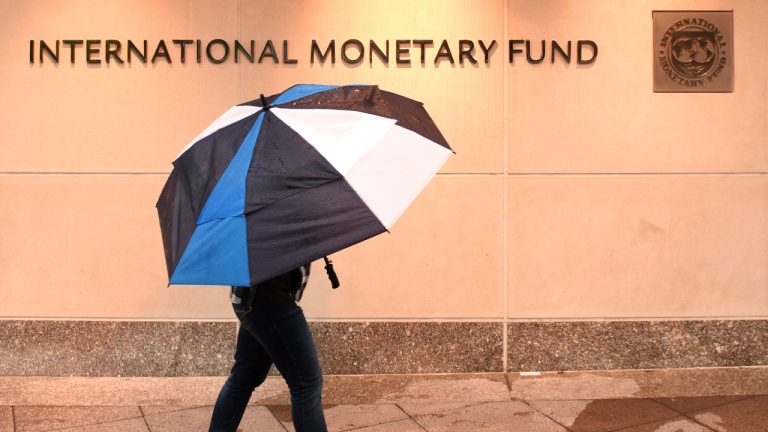2020-12-29 17:39 |
From institutional investors to the decentralized finance (DeFi) boom and CBDCs, 2020 has had big surprises for the cryptocurrency industry. It goes without saying that 2020 has been an eventful year. From the pandemic to stock market crashes to a global economic turmoil and a digital revolution, the world has gone through massive changes, this year. And that is also true to the cryptocurrency industry, which has been thriving in 2020, featuring new and exciting market trends.
The rise of CBDCsIn the past few years, there were only rumors about central bank digital currencies (CBDCs). Issued and controlled by the state, a CBDC refers to the digital version of the national currency that has the potential to replace cash.
However, in 2020, we have seen rapid development in research activities in this field, with numerous governments entering a heated race with each other to develop their CBDCs. In fact, the Bahamas already launched its Sand Dollar, in October. At the same time, China has been leading the state-issued crypto development among major economies, launching pilots and preparing a draft law for its digital yuan project.
Sweden’s e-krona project is expected to complete its trial in February 2021, with the government launching a formal review on the cashless nation’s potential transition to a state-backed digital asset. The United States, the United Kingdom, and the European Union are still at the beginning stage of CBDC development.
Given the benefits of digital assets and blockchain technology, it’s not surprising to see so many governments exploring CBDCs to make their economies more efficient. With the coronavirus-fueled shift to digital payments, a state-issued cryptocurrency has become even more important for central banks to fulfill the rising demand and create a financial system where they have control over electronic transactions.
I believe that in 2021 and the years after, CBDC development will further accelerate, with more state digital currency trials taking place and major economies like China releasing their state-controlled crypto assets.
Record institutional investments in bitcoinWe can safely conclude that 2020 has been the year of institutional investments in cryptocurrency.
In August and September, publicly traded business intelligence company MicroStrategy hit the headlines as it bought $425 million worth of bitcoin (BTC). Since then, the firm has increased its bitcoin holdings with a $50 million purchase, as the business is seeking to raise nearly $550 million for future cryptocurrency investments.
Apart from MicroStrategy, corporate players like Square, Galaxy Digital, and insurance firm MassMutual have been increasingly investing in crypto, this year. Digital asset manager Grayscale was raising record cryptocurrency investments in three quarters in a row, in 2020.
According to Bitcoin Treasuries, institutional investors are holding nearly 890,000 BTC, which is over 4 per cent of the total circulating BTC supply. But what is the reason behind this sudden and massive surge in the institutional interest in bitcoin?
Safe assets on the general market such as high-quality government bonds and savings accounts provide limited returns to investors just to be eaten away by inflation. As a result, institutional investors are looking for alternative investments to meet their shareholders’ expectations. Similarly to gold, bitcoin functions as a safe haven asset, with a significantly greater growth potential.
Taking this, the record low BTC volatility, and the maturing crypto industry into account, institutional investors and corporates now see bitcoin’s potential to increase their returns while hedging against the general market’s risks.
Unless something drastic happens, I believe more large companies and institutional investors will follow in the footsteps of MicroStrategy to increase their bitcoin investments in 2021.
Bitcoin price hits a new all-time high2020 is an exceptional year for the crypto industry, and we can already see its positive effects on bitcoin price.
Since the initial coin offering (ICO) craze in 2017, bitcoin hadn’t been able to get past its historical maximum for a long time, especially if we take 2018’s devastating bear market into account.
But BTC price has achieved a new all-time high at $19,835 on Nov. 30, topping its previous record of $19,783 that was set on Dec. 18, 2017. Bitcoin’s performance in 2020 becomes even more interesting when we take a look at how the cryptocurrency started the year.
While BTC price surged from $7,193 to as high as $10,401 in February, the coronavirus-fueled stock market crash drove the digital asset’s price down to $4,845 in March.
However, bitcoin recovered quickly and has been on a significant bull run since, reaching a high of $28,377, on Dec. 27. As of Dec. 28, BTC increased by 280 per cent since the beginning of the year. For comparison, gold managed to increase its value by 21.85 per cent during the same period.
While part of this surge can be attributed to the bitcoin halving of 2020 – in which the newly minted BTC supply was cut in half – much of bitcoin’s success this year comes from the rising investments, especially among institutional investors, and the organic development of the crypto industry.
Effective crypto regulationsIn 2017, the cryptocurrency industry was rather unregulated, which allowed the then-increasing number of fraudulent projects and cybercriminals to target the space without risking too much.
Furthermore, several digital asset companies took advantage of the limited regulation to launch ICOs, raising a record amount of funds with only a concept or a semi-finished product. As a result, speculation, fear-of-missing-out (FOMO), and hype were driving digital asset prices to all-time highs in 2017, until they crashed during 2018’s crypto winter.
The cryptocurrency market’s state and price movements back then can serve as an excellent case study for showing the importance of the industry regulation. To protect investors and avoid such a misfortunate scenario in the future, regulators have taken an increased interest in the crypto industry following late 2017 and early 2018.
Since then, multiple jurisdictions have created viable regulatory frameworks around crypto. Regulation helps build trust, protect market players, and encourage digital asset projects to innovate. At the same time, it also makes businesses carry greater responsibility.
Although some of the existing frameworks certainly need improvements — take, for example, the issue of inconsistent categorization of digital assets across multiple jurisdictions — I expect the world’s most sizable markets to regulate cryptocurrencies, especially in terms of storing and transferring assets, by Q2 2021.
The DeFi boomAlthough decentralized finance (DeFi) wasn’t founded in 2020, this year has seen the highest growth of the sector.
According to DeFi Pulse’s statistics, the total value locked in decentralized finance solutions surged from $675 million on Jan. 1 to $15.08 billion as of Dec. 16, representing a massive growth by 2,134 per cent.
The reason why DeFi has been surging exponentially lies in its ability to create an alternative, more open, transparent, and democratic way for investors to access financial products and services, avoiding the involvement of paperwork or third parties.
As an alternative to low or even negative yields of savings accounts and bonds, DeFi users can supply liquidity, stake coins, or lend cryptocurrency to others, with limited risks, while earning decent interest on their digital assets. Again, some other activities like yield farming allow investors with a higher risk appetite to increase their potential ROI.
Interestingly, institutional and corporate clients are increasingly joining retail investors in the DeFi industry.
As a result, I expect the decentralized finance space to grow further in 2021 and become a more efficient market, as long as institutional investors keep coming and technology matures.
2020: one of the best years for cryptoFrom the rapid development of CBDCs and creation of effective regulatory frameworks to the growth of bitcoin, institutional investments, and DeFi, there have been many things happening in the digital asset industry in 2020.
Despite the current global economic turmoil, crypto has had one of the best years in its nearly 12 years of history. At the same time, as cryptocurrencies continue to mature and effective regulations are being rolled out, I think 2021 and subsequent years will be even better.
NOTE: The views expressed here are those of the author’s and do not necessarily represent or reflect the views of BeInCrypto.
The post 2020 Was a Good Year for Crypto, and We’ll Soon Have Even Better Ones appeared first on BeInCrypto.
origin »Digital Rupees (DRS) на Currencies.ru
|
|



























